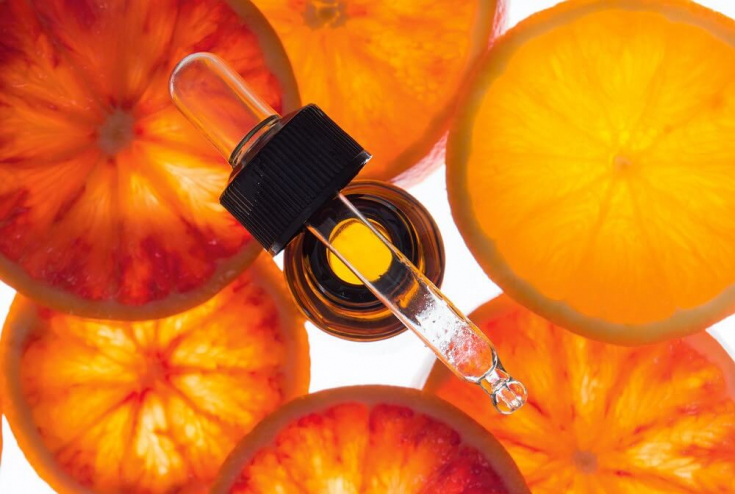The use of vitamin A for external and systemic use has long been considered the "gold standard" for the treatment of acne, eczema, dermatitis of various etiologies, as well as the correction of age-related changes.
There are many cosmetic products with retinol in various concentrations, both for use by a beautician and for home care. In everything you need to observe the measure, more – does not mean better, but after – does not mean as a result.
In the article estet-portal.com we will tell you with what components vitamin A should not be combined in order to get the result and not harm the skin.
- Retinol for facial skin: friend or foe
- Retinoids and Vitamin C
- Retinoids and Benzoyl Peroxide
- Combination of vitamin A and cosmetic products with AHA - acidsami
Retinol for facial skin: friend or foe
Retinoids – a group of substances that includes retinol (vitamin A) and its derivatives. These are compounds that are capable of causing effects as a result of activation of retinoic acid. They are widely used in cosmetology for the treatment of dermatological diseases, as well as for rejuvenation.
Read also: Effective and safe use of retinoids for acne treatment
Distinguish between natural retinoids and synthetic derivatives.
Natural retinoids take part in gene transcription as they activate nuclear receptors. They bind to transcription factors - a «ligand»minus receptor» complex is formed. It attaches to the promotion site of the desired gene, resulting in the production of substances with pharmacological properties.

Synthetic retinol derivatives work in a similar way. They also influence the processes of cell proliferation and differentiation by activating nuclear receptors.
Cosmetic products containing vitamin A and its derivatives slow down the proliferation of epithelial cells of the excretory ducts of the sebaceous glands, reduce the formation of sebium and thus facilitate its release to the skin surface.
When used externally and systemically, retinoids have anti-comedogenic, seboregulatory, anti-inflammatory, keratolytic & nbsp; and immunomodulatory properties.
They activate regeneration processes in the skin, stimulate the synthesis of collagenene.
Retinoids and Vitamin C
Retinol and ascorbic acid separately – these are two useful components for our skin that help solve many problems. But is it worth combining them – need to look deeper.
The optimum pH for retinol to work is pH 5.5 to 6. For products that contain vitamin C, a lower pH will be comfortable – 3.5 or less.

Read also: Skin and retinol: how to use retinoids correctly so as not to harm
When using such drugs at the same time, they simply will not allow each other to manifest themselves to the maximum. It is better to apply them in courses, alternate, or another option: retinol for facial skin - in the evening, and a remedy with vitamin Cth – in the morning.
Retinoids and benzoyl peroxide
Benzoyl Peroxide – one of the main remedies for acne treatment. It has antimicrobial and keratolytic properties. During the performance of its functions, benzoyl peroxide triggers the oxidation process due to the release of oxygen, which inhibits the reproduction of Propionibacterium acnes.
Thus, it can be assumed that it may well neutralize the effect of retinoids.
Cosmetics with these two ingredients should be used separately at different times. There are two options:
- retinol – in the evening, benzoyl peroxide – in the morning;
- apply benzoyl peroxide pointwise, and vitamin A – on the entire surface of the skin, as expected.
Of course, the doctor will help you choose the best – dermatocosmetologist who knows the individual especially sti. This will preserve the effect of both drugs and avoid unpleasant reactions on the skin.
H2 Combination of vitamin A and cosmetics with AHA – acids
ANA acids – a group of natural acids that are widely used in skin care. These include glycolic, lactic, mandelic, malic, citric, and tartaric acids. They are strong exfoliants: they help to remove dead cells and increase the division of new ones.
Read the most interesting articles in Telegram!
First, we remember that retinoids are at their best at neutral pH. Acids are shifted acidically – alkaline balance to the acid side. As in previous cases, this will not allow the drug to fully manifest itself.

Secondly, the combination of these two components in the same period of time can have an unpleasant effect on your skin. AHA acids have a powerful keratolytic property, due to which they will promote a deeper penetration of retinol and enhance its effect when used simultaneously. This can lead to undesirable effects on the skin:
- dehydration;
- appearance of peeling;
- annoyance;
- violation of the protective barrier of the skin.
It is necessary to use cosmetic products with AHA acids and vitamin A at different periods of time.
Read also: Incompatible cosmetics that kill each other's benefits
In cosmetology, each ingredient is good on its own, but in combination with another, it can be harmful and completely nullify the effect. Retinoids require special attention, are prescribed only by a doctor – a dermatocosmetologist who will give you the necessary recommendations on whether to combine them with other products to achieve the result.
More interesting stuff on our YouTube channel:







Add a comment